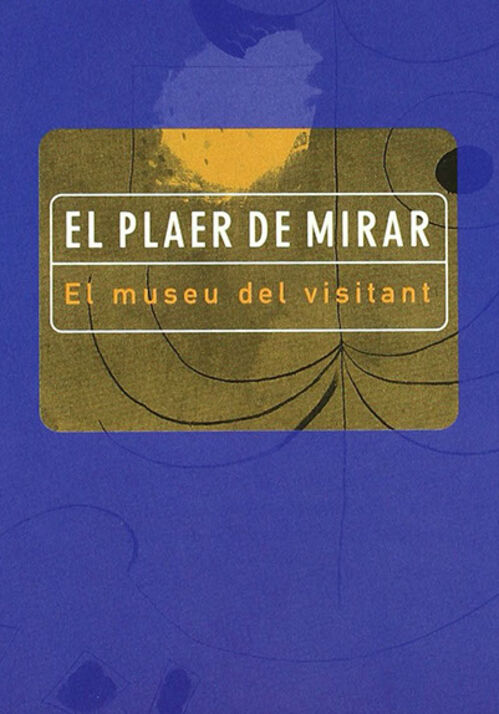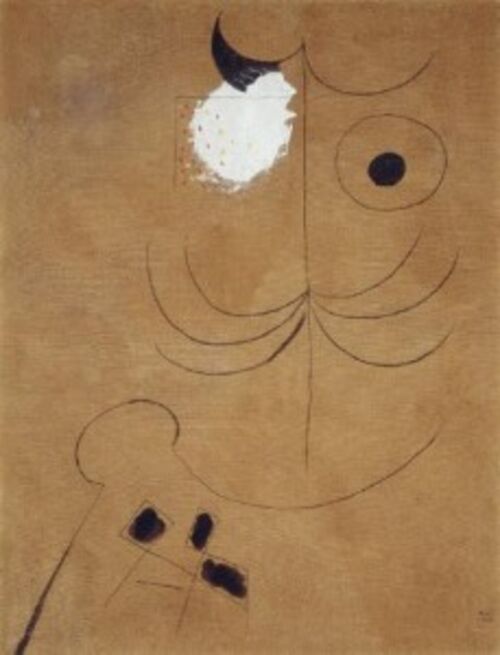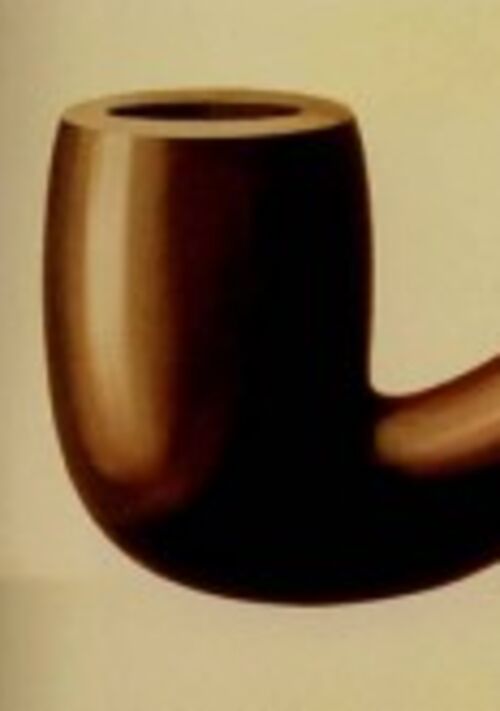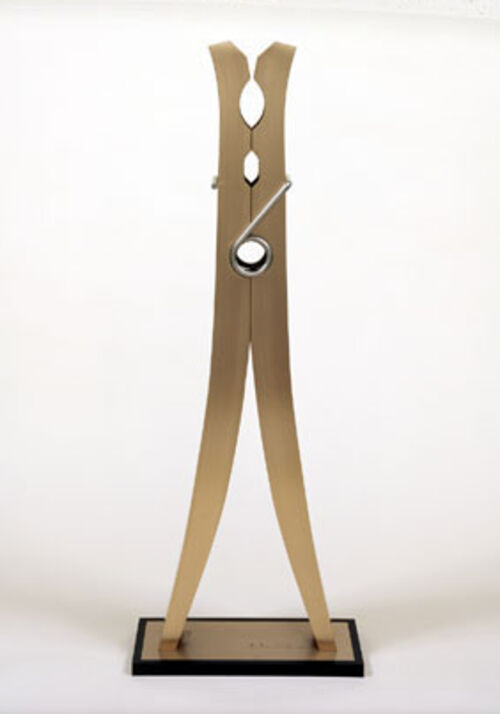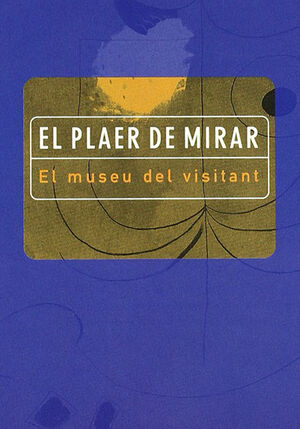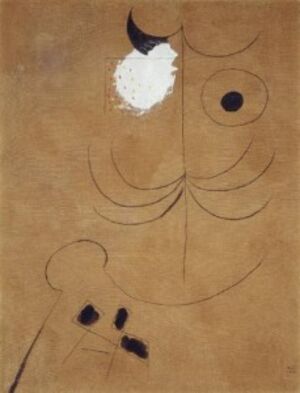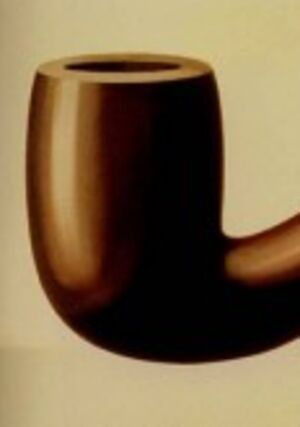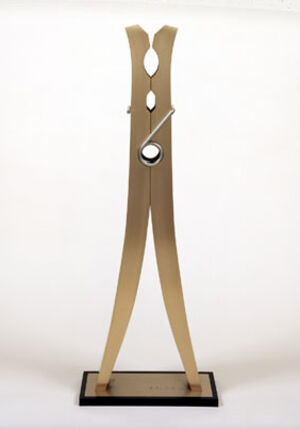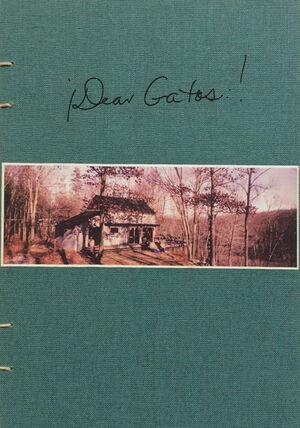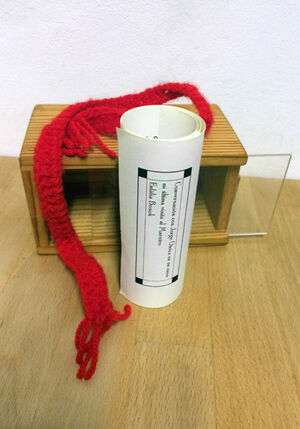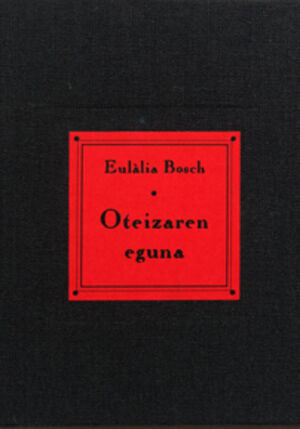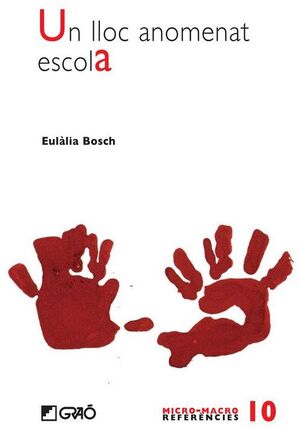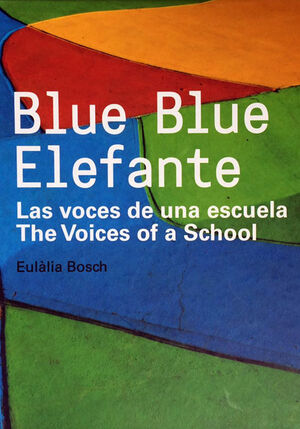The Pleasure of Beholding
The visitor's museum
Editorial Actar, Barcelona 1998
What would museums be without their visitors?
What does the spectators creativity consist in?
What is the mystery concealed behind a work of art?
How is it that the art of now appears so strange to its contemporaries?
El Plaer de mirar proposa mirar les arts en veu alta. Obrir un diàleg que ens apropi al plaer de la contemplació. És a dir, el plaer de mirar i al plaer de rumiar. Al gust per barrejar històries, on la nostra, la de cadascú, tingui també un lloc. És un llibre pel passejant de les arts. Per aquell que, de tant en tant, sent l’atracció de visitar un museu, i a la sortida pensa que potser hi hauria de tornar més sovint.
Preface
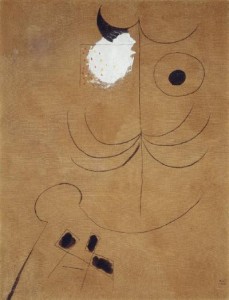
Joan Miró, L’acomodador del music-hall (The Music Hall Usher), 1925
Twilight. Music hall foyer. Scents and sparkles. Forced laughter and ready smiles. In the background, a time-worn brown curtain. Coarse sackcloth yearning to be red velvet. An indefinite landscape, the promise of colour. Against the background, an eye that sees in the dark. Beside the eye, its inseparable companion, a torch that caresses the dazzled eye of the late-coming spectator. A circus epaulette to escort the surprise. A thin eyebrow that welcomes the newcomer in; a thick eyebrow, wary of light tippers. A moustache foretells the promised entertainment. The investigator’s vague gesture towards the newcomer.
Conquest of just the right seat for the moment that is just beginning. A uniformed smile. Unfathomable thoughts. An actor’s life amidst the stalls. Half person half character, the usher talks as he walks. Turns off both his babble and his torch. The usher ushers the newcomer’s glance and turns him into a spectator. The chance for emotion is served.
History mixes many stories. Just as the history of art does. It is the story of artists and the story of materials; it is the story of art dealers and professors; it is the story of museums and art galleries; it is the story of culture and cultures; it is the story of how the subjective becomes objective; it is the story of how the particular becomes universal and the universal is made flesh; it is history as a whole as seen from a clay pot; it is facts and their interpretation. The story of art is a true analogy of the story of human beings.
Le vent se lève!… Il faut tenter de vivre!
L’air immense ouvre et referme mon livre,
La vague en poudre ose jaillir des rocs!
Envolez-vous, pages tout éblouies!
Rompez, vagues! Rompez d’eaux réjouies
Ce toit tranquille où picoraient des focs!
Valéry, Le cimetière marin, XXIV
Light and Stenographers
Museums which collect and display works of art may easily be compared to power stations. For museums are like curious control panels where orders are given for many wires to be connected at once, moved by strange mechanisms, often remote from one another. With their works, artists supply museums with an initial ‘light’, which allows them to exist, which turns them into something potentially visible. People in charge of exhibitions harvest this possibility, generated in a lot of far-off studios, and add indirect lighting; without such lighting, what the artists produce cannot take final shape as works of art. When individual visitors contemplate these works, they fine-tune their intensity dials to just the right setting for each case.
When everything is working, these power stations called Art Museums make up an important part of the lighting system for a public seeking to widen and deepen its own way of seeing the world. When any mechanism goes awry, the station produces darkness—not just lack of light, but truly ‘black light’—and leaves a vague wake of a wish to put an end to the confusion.
To light is often a poetic synonym for to bring alive. Such is also the case in this metaphor. We bring works of art to life when the attraction we feel for them stirs in us an eagerness to see them, until we can contemplate them with the fascination they demand of us.
But no visitor will ever be a true visitor unless the museum allows him/her to walk among the works with the necessary intellectual ease, unless it makes the visitor feel comfortable among the collection.
Museums are a recent invention, and the visitor has always to be discovered.
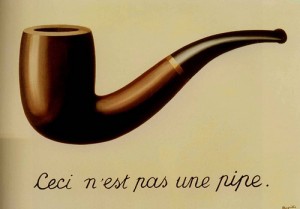
Magritte – Ceci n’est pas une pipe – 1929
The museum that first showed us, for example, Magritte’s pipe in order to make us see the substantial differences between images and things, will help us now to go one step farther. We need to know that, today, museums offer many things that should be looked at as images. Claes Oldenburg’s clothespin, combining the harmonious proportions and the delicacy of the implicit artistic gesture with colossal size, may conjure up the tenderness of lovers, an image which pushes the limits of reality, until the temporality of the clothespin’s everyday image becomes relevant to the viewer.
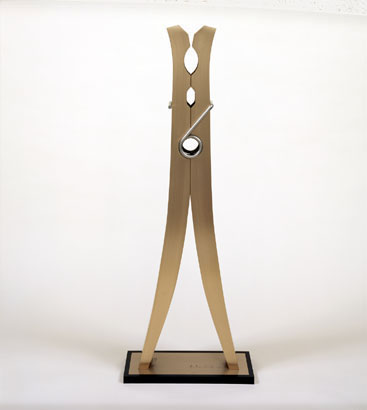
Claes Oldenburg – Clothespin 4 – 1974
The images we learn to read in a museum gallery may enrich our life in the realm of things, enabling us to see them with new eyes, arousing our curiosity to know what would happen if—?
At this point one might add a stenographer to the lights. Perceptions are shared and determined by means of dialogue between the occasional museum-goer and the experts who prepare informational brochures for exhibitions, conceive catalogues, and carefully prepare the museum’s documentation services.
By looking aloud at works of art the visitor is no longer a museum passer-by, and becomes an engaged viewer. The senses of the engaged viewer are sharpened by new works which may heighten his/her ability to escape from the realm of the already-known. The engaged viewer wants to be taken by surprise by anything that may suggest a subtle view of the clothespin—to go on with Oldenburg’s sculpture—such as recalling it as an item with which we played in early childhood, and as an icon which represents women’s tie to domestic life with extraordinary accuracy.
In contrast to theatre- and concert-goers, no-one will amuse the spectator in the visitor’s museum. The visitor will not find someone to amuse him/her, unless s/he conceives the show by him/herself. Artists have not moved from their studios, nor exhibition curators from their offices. They have only left their traces, dispersed in the galleries. In the museum, the stage—in the theatrical sense—is embodied in the subtle relationship that is established between some of the works on display and some of the people that look at them. Only when the invitation to follow diverse itineraries among the galleries and the works is strong enough will the museum begin to be the time and place to engage in the pleasure of looking. And then, by acknowledging the viewer’s place, we will understand why the artist is still in his/her studio and the curator in his/her office.
There can be no show without the viewer, though. The museum, like the wind that blows round the cemetery at Seta, must help us to try to live more fully.
This book proposes that we look aloud at art. To open a dialogue that brings the viewer closer to the pleasure of contemplation. That is, the pleasure of beholding as well as pondering. The pleasure of mixing stories, where our story, everyone’s story, has a place.
It is a book for both the engaged viewer and the person who occasionally visits a museum, and who afterwards thinks that s/he could do so more often.
On the TV news, we watch terrifying images—images that, unfortunately, are shown too often—and feel no desire for them, because we feel compelled to know what is happening in the world. And perhaps watching things we do not really want to see lessens our willingness to look for new images.
This book deals with the archive of images and words that have made us who we are, and proposes that we rediscover the pleasure in enlarging our inventory, in order to make life easier to understand and more human.

